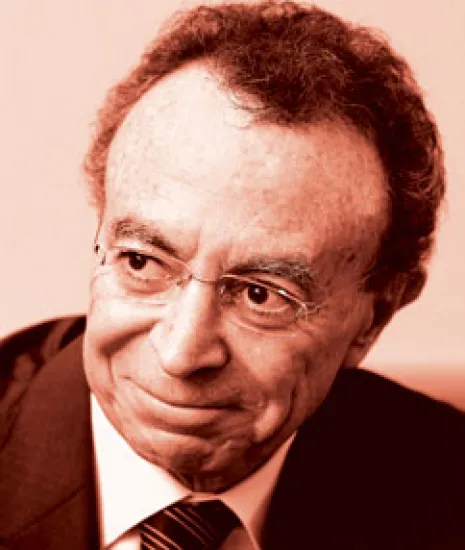As the economic crisis has spread from the leading industrial nations to Latin America, few countries have been hit as hard as Mexico. The country sends 80 percent of its exports to the U.S., and it depends heavily on remittances sent back by the millions of Mexicans working across the northern border. With both of those areas battered by the U.S. recession, Mexico’s economy is reeling.
Industrial production plummeted by 6.7 percent in December from a year earlier, automobile exports fell 56 percent in January, and more than 450,000 jobs were lost in the last quarter of 2008. Remittances from the U.S. dropped by 3.6 percent, or $931 million, in 2008. The peso has lost just over one third of its value against the dollar since August, making it one of worst performers among major currencies. In late February the risk premium on Mexico’s bonds surpassed that of Brazil for the first time since 2001.
In confronting these difficulties one of Mexico’s chief assets is its battle-tested central bank governor, Guillermo Ortiz. No stranger to turmoil, Ortiz was appointed Finance minister by then-president Ernesto Zedillo just after Mexico devalued the peso in the Tequila Crisis of December 1994. Over the following three years, he brought the economy back from a deep recession and restored the banking system with a rescue package that cost the equivalent of 18 percent of gross domestic product. As governor of the Banco de México since January 1998, Ortiz has successfully managed the peso’s floating exchange rate, overseen a rise in currency reserves, which hit a record of $98.9 billion in September — nearly triple the level at the start of this decade — before falling to $90.4 billion in January, and promoted regulations that allow foreign investors to control Mexican banks. (They now own 90 percent of the country’s banking system.)
“Ortiz will always be remembered as the man there when Mexico’s banks and capital markets became modern,” says Arturo Porzecanski, an economist at the School of International Service at American University in Washington, D.C.
The governor now faces perhaps the biggest challenge of his 30-year career. The central bank recently revised its forecast for Mexico’s economy, projecting a contraction of 1.8 percent this year, compared with growth of 1.8 percent in 2008. The peso’s weakness has prevented Ortiz from slashing rates to spur the economy. The bank has managed to trim its key short-term rate by only 75 basis points, to 7.50 percent, since January. The central bank introduced a currency auction in October, offering to buy $400 million worth of pesos daily in a bid to support the currency. Early last month it adopted a more muscular stance by intervening directly in the currency market to buy $1.1 billion worth of pesos over three days. In all, the central bank has spent some $20 billion to defend the peso since last summer.
In his office in the heart of Mexico City’s renovated colonial downtown, Ortiz spoke recently to Institutional Investor Contributing Editor Lucy Conger.
Institutional Investor: Why did the Banco de México recently change its method of currency intervention?
Ortiz: It was important to introduce a certain unpredictability in the action of the bank because some intermediaries were taking positions against the peso, taking into account what had been the bank’s limit of intervention. What we sought was to change the behavior. I think we’ve done it. The volatility of the exchange rate has been reduced.
Would cutting interest rates stimulate growth?
The normal reaction of a central bank when there is a reduction so significant in economic activity is to reduce interest rates. In the case of Mexico, the financial sector is smaller, so the impact that a reduction of interest rates can have to mitigate the recession is limited. But the direction of the movement of rates — even if the impact is limited — is clear.
How do you compare this crisis with the one in 1995, and what can Mexico do to combat the downturn?
In ’95 the problem was specific to Mexico — a lack of confidence caused by factors including the assassination of [presidential candidate Luis Donaldo] Colosio and the Zapatista guerrilla uprising in Chiapas. We had very strong imbalances — a current-account deficit of almost 7 percent [of GDP].
Today the situation is not caused by us. We have a healthy financial system that did not get involved in toxic products. There is not a systemic financial problem. We have not had a problem of funding in dollars nor in pesos for the banks. However, we are feeling the credit crunch. There has been capital flight from emerging nations, and this has brought a depreciation of the assets of emerging economies, including exchange rates. On the real economy side, the enormous contraction of industrialized economies is having a big impact in emerging economies through the drop in demand for exports and, in our case, the reduction in remittances.
What has a major impact is the global nature of this crisis, the first global financial crisis. The channel of transmission is an absolute loss of confidence. We are in a vicious circle that has not yet ended.
The principal responsibility obviously lies with the industrialized countries, especially the U.S., which was the epicenter of the crisis. And they have not yet managed to stabilize the financial sector in the U.S. There was an erroneous diagnosis of the crisis — at the outset it was thought to be a contained problem. For that reason the measures taken were partial and reactive. There was no real taking the measure of the problem and much less of the global repercussions.
What can be done in Mexico to try to combat the recession?
On the fiscal side there is some degree of liberty; [the government has] already announced a series of fiscal measures to attenuate the impact of the recession. On the monetary side we have begun a cycle of monetary easing, but this also has limitations. To the extent that we’ve had a significant depreciation of the exchange rate, that represents a threat of inflation.
Do you believe President Barack Obama’s administration will revive U.S. growth? And do you worry that U.S. borrowing will choke off credit for Mexico and other countries?
The principal problem is to reestablish confidence — confidence in the financial system and a bit of confidence among consumers that the economy will stop falling. Surely, the program of fiscal stimulus that was approved by Congress should contribute to mitigate the economic recession in the U.S. What’s lacking is the other part, the financial issue. The issue is whether there will be a “good bank/bad bank” solution, and whether some banks will be nationalized. There’s no silver bullet. In all financial crises we’ve seen, the reestablishment of financial confidence is gradual, and it [requires a] series of measures that eventually gain traction. The systemic failure was so big [that] reestablishing confidence is going to take more time. The deleveraging is without precedent.
What role should the International Monetary Fund play, and does it need more money?
I believe the Fund should retake a preponderant role in the international financial system. The only reason U.S. consumers were able to indebt themselves and consume beyond their possibilities was the enormous flow of capital to the U.S., especially from China. We were seeing this for years, but the Fund was not effective in giving early warnings.
In 2006 the Fund established a mechanism of multilateral surveillance, and it had sensible recommendations: that the U.S. had to increase its savings rate, China had to basically revalue its currency, and Europe had to adopt structural changes. They were measures that would have reduced the global imbalances, but the political will to do so did not exist. So a lot depends on the political will in the principal countries of the world — as much industrialized as emerging — to fix this situation.






